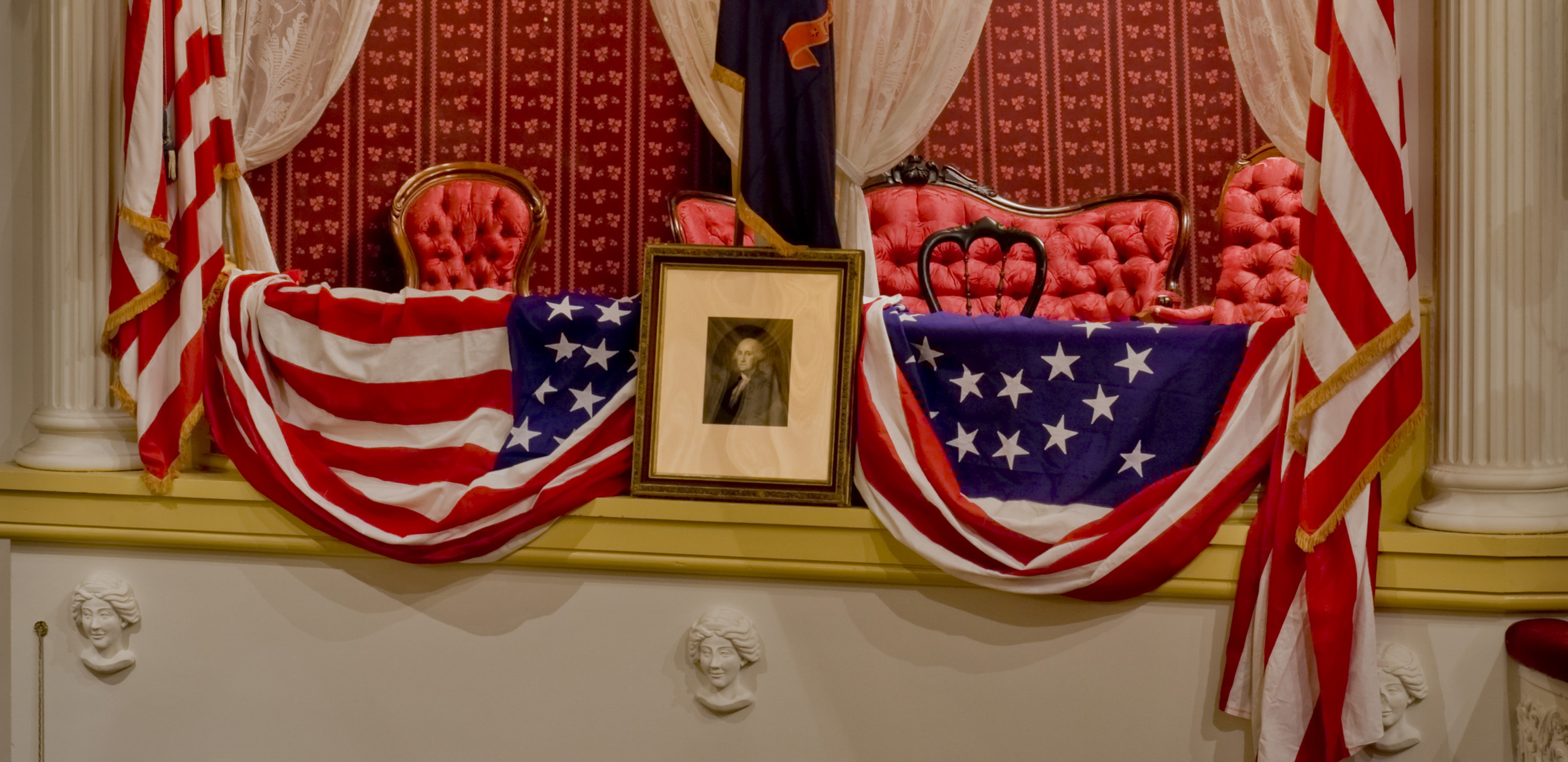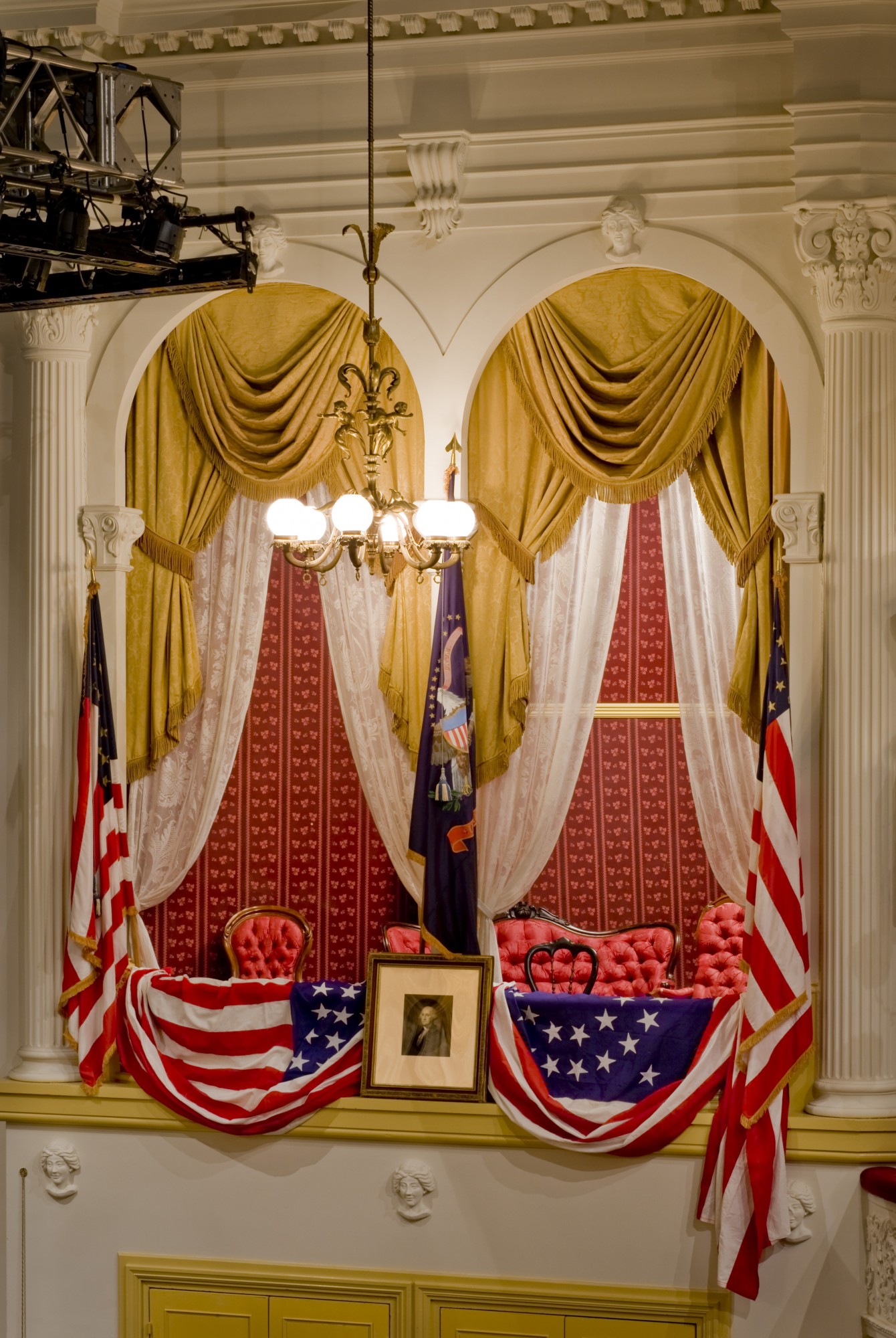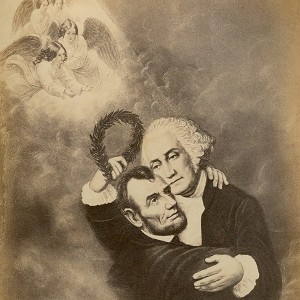
Why is a George Washington Portrait on the Ford’s Theatre Presidential Box?
One of our most commonly asked questions is about the portrait hanging from the railing of the Presidential Box. Visitors, reporters and members of our social media community always ask why we see George Washington there when the box was decorated for Lincoln to attend the play? One local myth-buster questioned if Ford’s Theatre “accidentally put out the wrong presidential portrait.”

But really, why is there a portrait of George Washington on the Presidential Box?
The portrait sits on the balustrade just below Boxes 7 and 8 at Ford’s Theatre. These are the separated seating areas immediately above the level of the stage on the right side of the theatre.
John T. Ford and the theatre’s managers commonly joined the Boxes 7 and 8 together by removing a wall partition to accommodate larger parties. When Ford heard that President Lincoln would attend Ford’s Theatre on April 14, 1865, he decorated the President’s typical box with flags and comfortable furniture to spruce it up for the occasion. In addition to adding a velvet-covered sofa, cane chairs and a walnut rocker (which came from the personal lodgings of his brother Harry Ford, who lived on the third floor of the Star Saloon—adjacent to the Theatre), Ford also decorated the outside of the box so the audience would know the president was in attendance. Ford borrowed from the Treasury department a bunting of flags to drape from the rail and, lastly, added a portrait of George Washington.
In 1865, no presidential seal or official symbol of the presidency existed, so we believe that Ford chose the George Washington portrait to make allusions to the presidency. At the time, it was not uncommon to see representations of George Washington as a symbol of national unity and patriotism, just as today we recognize images of the eagle or flag in the same way.

Is the portrait on display the original?
National Park Service curators removed the original in August 2015, and the portrait currently on view is an exact replica. Because of the close proximity to the stage, which entails bright stage lights in addition to dust, debris and other pollutants from set-building and regular visitation, the original artifacts from the Presidential Box are now in storage to better preserve them for future generations.
Is the frame for the original nicked?
Yes, the frame of the original George Washington portrait is nicked on its upper-left corner. You can see the nick closely by zooming into the corner of the frame on this Google Street view image, taken when the original portrait was still displayed.

The indentation was said to be made by assassin John Wilkes Booth’s spur as he jumped from the Presidential Box after he shot the president and ran to his waiting horse in the theatre’s back alley.
Do you have questions about the historic site or the history of Ford’s Theatre that you want us to answer? Tweet us at @FordsTheatre or email us at [email protected].
Anali Alegria is a former communications associate at Ford’s Theatre.

